From Edwardian times until the 1960s, an elegant hotel built in a city was a place to see and be seen. Exquisite dining rooms hosted celebrities, politicians, and the wealthy from all over. A hotel can still be an attractive center, but some hotels in their time were landmarks because of their lavish décor and architecture and were known by who frequented their clubs and dinner parties. Unfortunately, styles change, neighborhoods change, and wealth comes and goes. Many landmark hotels now sit in ruins after being abandoned.
In Detroit, the Lee Plaza opened in December of 1927. It wasn’t a typical hotel in that not only were there single rooms for travelers, but there were also over 200 luxury apartments with all of the amenities of a five-star hotel. It was owned by Ralph T. Lee, a self-made real-estate developer in Detroit who went on to own over 30 hotels and apartment buildings.
The 17-story building was a magnificent example of Art Deco design with marble and expensive wood, decorated with many frescoes and statues. Huge mirrors lined the walls of the ballroom, which boasted four crystal chandeliers and could hold about 200 people.
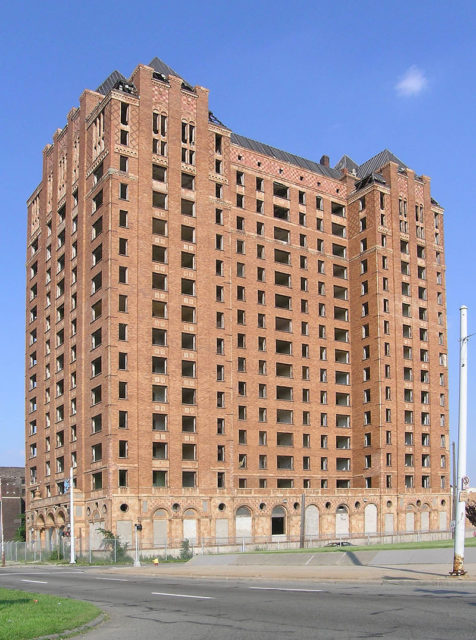
The Lee Plaza enjoyed a prosperous couple of years from its opening until the Great Depression came to Detroit. Legal problems and fraud hit Ralph Lee hard, and by the time of his death in 1940 the Lee Plaza was being torn apart over legalities. The building was turned into senior apartments until 1997, when the building closed down. It has since been vandalized to the point of becoming unsafe and the only tenants remaining are squatters and drug addicts.

In 1893 the Lorraine Apartments opened in Philadelphia and was considered the most luxurious apartment building in the city. By 1900 it was sold to the Metropolitan Hotel Company and turned into a hotel. Father Divine of the Divine Peace Mission Movement bought the hotel in 1948 and transformed it into the first racially integrated hotel in the United States.
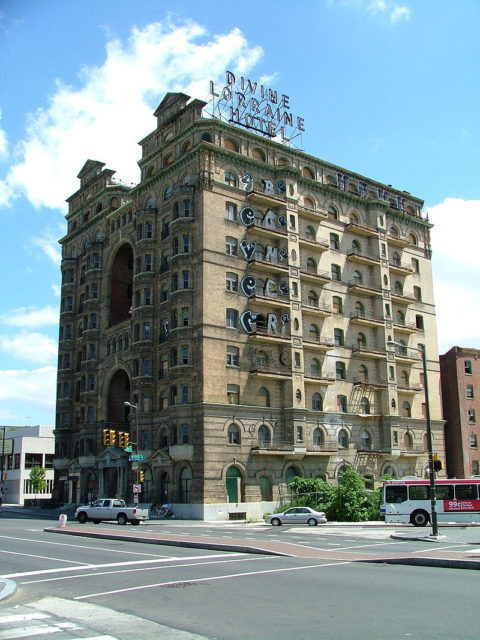
Residents and guests were required to uphold strict moral and behavioral rules. The Lorraine Apartments became renamed the Divine Lorraine Hotel until the hotel was abandoned in 1999. Since then the hotel has been sold two more times until it was acquired in 2012 by Eric Blumenfeld, who took on the task of remodeling and restoring the once elegant hotel and has turned it back into an apartment building. It is currently open for business and accepting new tenants.
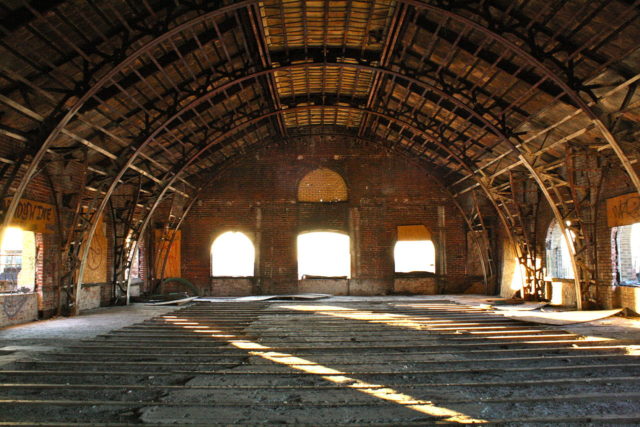
No discussion of historic luxury hotels can be complete without the Waldorf Astoria in New York City. The Waldorf opened on Fifth Avenue and 33rd Street in 1893 and the Astoria followed four years later. William Waldorf Astor and his cousin, John Jacob Astor IV, owned the two hotels and merged them into one business that was run by John Jacob.
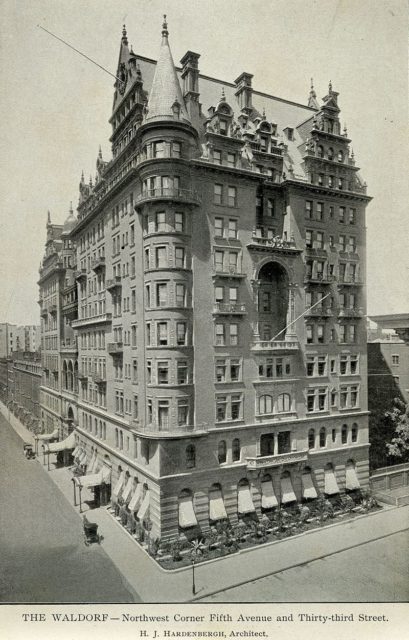
The hotel was the center of New York’s high society until John Jacob died in the sinking of the Titanic. William Waldorf returned to England and died there in 1919. The building fell into ruin and was torn down in 1929 after the stock market crashed. Not long after, the Empire State Building was built on the empty lot. A new hotel was built on Park Avenue opening in 1931, and the Waldorf Astoria continues to be one of the most famous luxury hotel names in the United States.
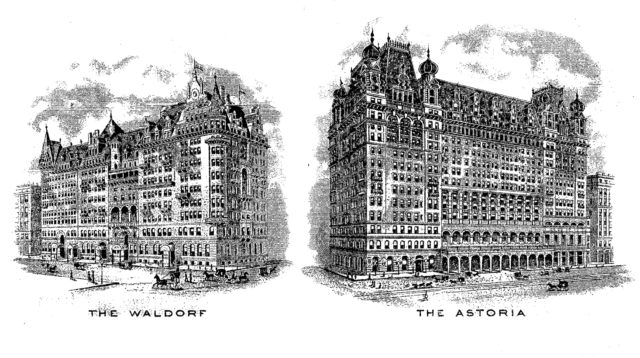
The Belleview Biltmore Hotel located in Belleair, Florida, was built in 1896 and owned by Henry B. Plant. Plant saw the future of tourism in Florida and successfully ran his business until 1920, when John McEntee Bowman bought the hotel. Bowman was in charge of Bowman-Biltmore Hotels Corporation and owned the chain of Biltmore Hotels. Through the years it changed ownership several times and was once used by the military during World War II for training classes. It then belonged to Legg Mason Real Estate Investors, who were unable to meet the mortgage when the recession hit and let the property deteriorate while they were embroiled in lawsuits. It changed hands again to Mike Cheezem of JMC Communities and closed down in 2009.

All but 10 percent of the structure has come down but thanks to the non-profit group Save the Biltmore Preservationists, the main building built in 1896 has been saved and restored. They hope to be open for business for the summer of 2018.
The Hawaiian island of Kauai was home to the posh resort Coco Palms, which opened in 1953. It became the place to be among celebrities. The 1961 movie Blue Hawaii with Elvis Presley was filmed at the resort, making it a popular holiday destination and a place to get married in the 1960s. Coco Palms could not survive Hurricane Iniki in 1992 and was abandoned. The resort was saved by GreeneWaters in conjunction with Hyatt Hotels, however restoration and reconstruction of the resort has been delayed due to occupation of part of the site by a group of native Hawaiians who claim their family has the rights to the land.
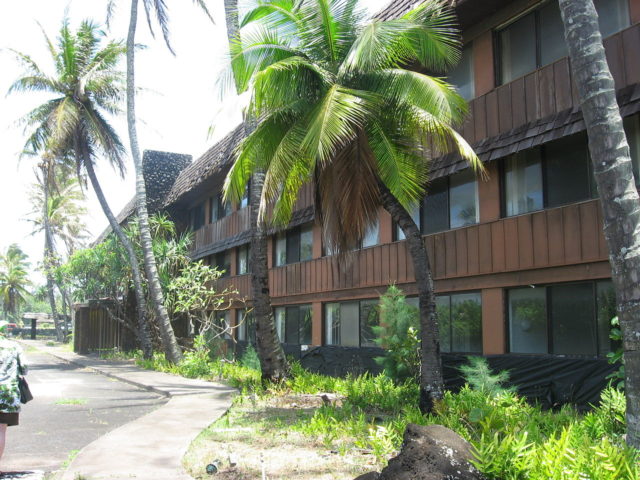
Finally, in the town that became a legend for its hotels, the Sands Hotel and Casino in Las Vegas was once the home to the legendary Rat Pack. Marilyn Monroe, Juliet Prowse, and Buddy Greco were official mascots. Although it doesn’t fit in the category of old hotels, it certainly has an interesting history.
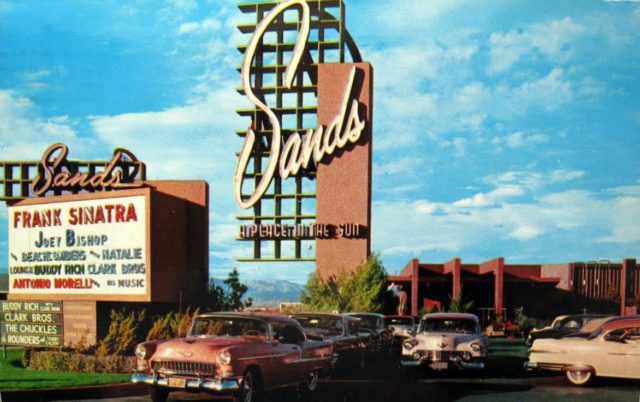
The best of the best performed here, including Frank Sinatra, Nat King Cole, Sammy Davis, Jr., Dean Martin, and Jerry Lewis.

A group of investors including Frank Sinatra owned the hotel, and it is entirely possible that Mafia money contributed to the overall success. In 1967 reclusive millionaire Howard Hughes bought the Sands and sold it to Kirk Kerkorian in 1988.
The hotel changed hands several more times until it closed in 1996. Las Vegas is a city of constant change, and the Sands was outdated. The days of the Rat Pack were over, and most of the members had passed on. The iconic hotel imploded in 2007 and replaced by The Venetian Resort.
